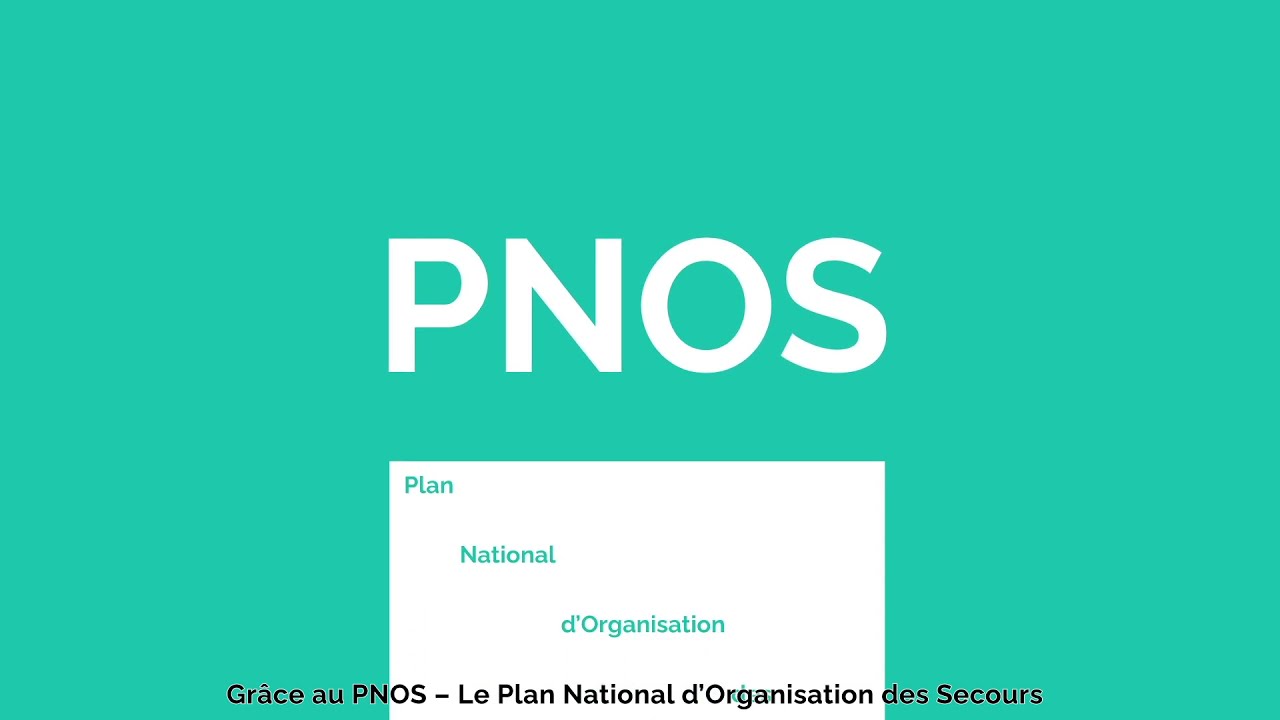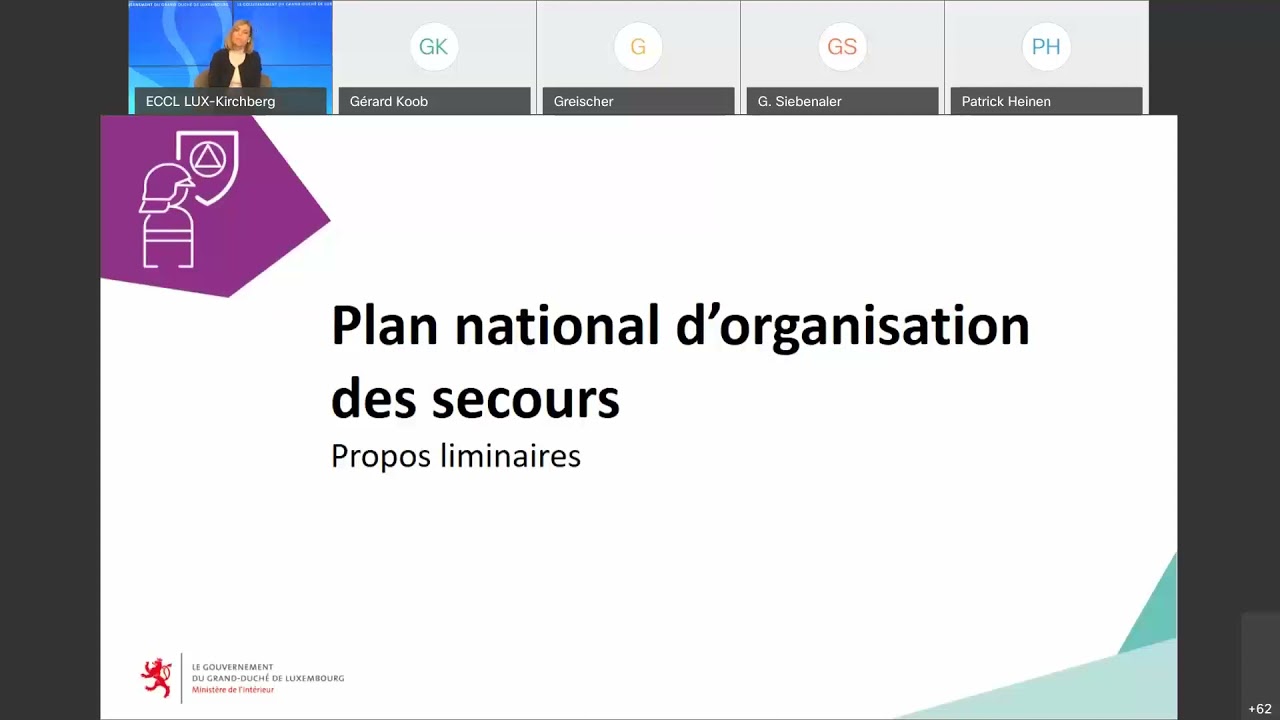The national emergency organisation plan (PNOS), as proposed in the amended law of 27 March 2018 on the organisation of civil security, establishes the guiding program that sets the fundamental guidelines for civil security. These guidelines set the ambition for the “Corps grand-ducal d’incendie et de secours” (CGDIS).
What is the PNOS?
The PNOS aims to create an inventory of all the risks present on the territory of the Grand Duchy of Luxembourg and to define intervention objectives.
The PNOS has three functions:
- An essential function which allows to fix the level to be set in terms of emergency services for the resident and non-resident population of the Grand Duchy of Luxembourg;
- A prospective function that defines what the CGDIS will be by 2025 and what scenario of risk development the CGDIS will have to cope with;
- A steering function of the actions of the CGDIS which justifies its operational organisation and its organisation chart, its operational and internal regulations, its recruitment, training, equipment and building programs, amongst others.
The PNOS forms the guiding program of the CGDIS.
How is the PNOS structured and what does it contain?
The PNOS consists of 5 parts. Starting from the description of all the aspects and characteristics of the Grand Duchy (geographical, demographical, its transport infrastructures, its economic and social activities, etc.), it is possible to identify three types of risks and threats. These are:
- The common risks of daily life. These are the ones that occur frequently, but whose severity is limited and result in emergency rescue operations of people (SAP), firefighting or extrication of a traffic accident victim;
- The particular risks, which are low in frequency but high in severity. These are the ones resulting from natural phenomena (floods, landslides, thunderstorms, tornadoes, etc.) or from technological failures in high-risk companies (16 corporations are classified as SEVESO);
- The exceptional risk, for which we do not have enough information to assess its occurrence over time and in the Grand Duchy. This could be an earthquake, the risk of an attack or acts of malicious intent aimed at the institutions present on the territory (NATO and the European Union) attacking vulnerabilities (IT networks, concentration of services in Luxembourg City and Esch-sur-Alzette).
This set of risks or potential effects of threats generates emergency operations. Their analysis shows that:
- the SAP accounts for more than 75% of rescue operations, while fires do not even account for 4%;
- the most important particular risk is that of flooding;
- from the point of view of threats and malicious acts, the Grand Duchy seems to be protected today.
Once the risks have been listed and identified, the aim is to examine how the CGDIS ensures operational coverage of these risks and potential effects of the threats. This analysis is realised through the 5 necessary strategic functions: prevention, operational forecasting, operational planning, intervention and assessment. The intervention corresponds to the execution of rescue operations, while the other four functions concern the organisation of the CGDIS and its functional directorates, zonal services and local units.
The PNOS highlights:
- That a great deal of organisational effort is required to develop and implement the concepts of prevention, operational forecasting, operational planning and assessment;
- That the CGDIS possesses:
- 100 fire and rescue centers (CIS), with recent equipment and materials adapted to face common risks;
- 9 specialised intervention groups (GIS) with machinery and equipment;
- That the CGDIS achieves, on a certain number of rescue operations, an arrival time on the scene within 15 minutes.
This analysis reveals two main areas of development by 2025:
- In operational terms, there will be an increase and a diversification of rescue operations. On the one hand, the estimated increase in the number of residents and of cross-border workers will result in increased activity in SAP, fire and rescue operations. On the other hand, the development of new production and transport modes, but also the more frequent occurrence of new risks resulting from the current climate change, such as severe thunderstorms, periods of heatwave and drought or the emergence of new viruses or threats, will require us to adapt our operational organisation in order to deal with them;
- Secondly, from an organisational point of view, it will be necessary to develop and implement the necessary concepts that are currently lacking, in order to allow for the implementation of relief efforts without constraints.
In view of this, the objective of the PNOS is to propose a strategy aiming to strengthen and consolidate the CGDIS, so as to enable it to achieve the following objectives by 2025:
- Guaranteeing operational coverage in less than 15 minutes in 90 to 95% of SAP rescue operations, as well as fire rescue operations;
- responding to the challenges of particular risks and the potential effects of threats;
- integrating the CGDIS partners in the operational management;
- promoting a culture of risk prevention and civil security to guarantee the resilience of the population.
The aim is to optimise the operational organisation of the CGDIS in order to meet the intervention goals and to build the managerial organisation to serve the operational missions.
In this regard, the main effort consists of reinforcing the professional staff to support and back up volunteers. This effort is divided into 3 areas:
- the increase in the number of professional operational firefighters. In order to meet the need for operational demand and to gain on the departure time, it is estimated that approximately 1100 professional firefighters are needed;
- the provision, in the long term, of approximately 430 professional firefighters for prevention, planning, training and management missions, distributed within the functional directorates, the zonal services and local units;
- an estimated need for 425 to 460 administrative and technical staff to support the firefighters.
To implement this strategy, a substantial financial effort is required, which represents an average annual increase of 8% in the CGDIS budget until 2025.
Finally, the CGDIS also needs to be capable to deploy abroad, on short notice from the international relief coordinating authorities and after government approval, the resources registered in the European civil protection reserve.
How will the PNOS be implemented?
The PNOS has first been submitted for consultation to the municipalities, the High Council for Civil Security and the Minister of Health. The latter were consulted on 1 March 2021 and disposed of three months to give their opinion on the proposed strategy and operational contract.
Since the PNOS was adopted by the government on 20 October 2020, the actions necessary for its implementation are to be defined and followed through. Prior to these actions, it will be essential to formalise the categorisation of the CIS. This will allow to deduce their daily operational potential (POJ), the equivalent of what a CIS must be able to “deliver” per 24 hours.
The POJ, determined by CIS, GIS, SAMU base, and for the command, medical and support chain, allows to define and implement the plans for recruitment, training, equipment, clothing, construction of barracks, etc. thanks to the support of the functional directorates, zonal services and local units.
Webinar
Almost 90 mayors, aldermen and municipal councillors participated in the webinar on the national emergency organisation plan (PNOS) on 25 March 2021.


